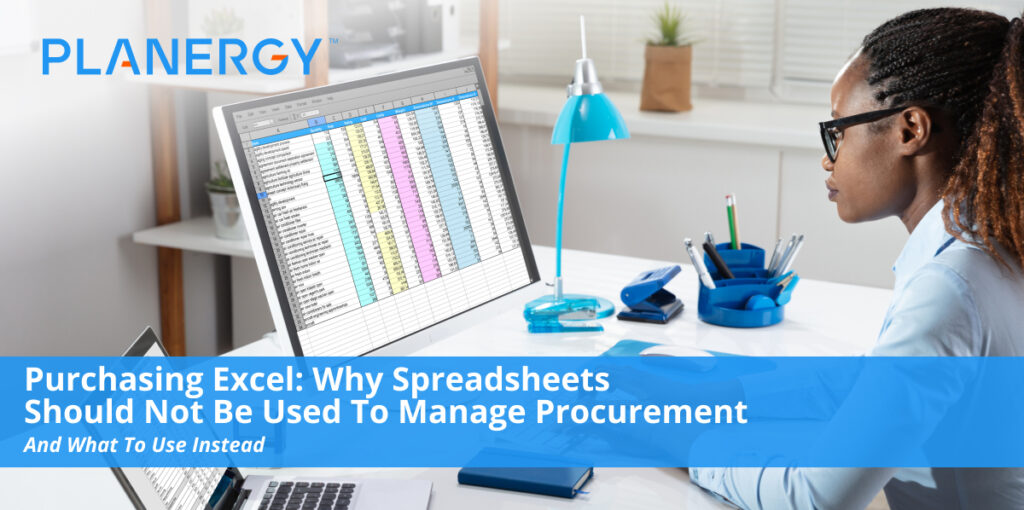Understanding procurement
Procurement refers to sourcing or obtaining goods or services for a business. The term may be used to refer to the actual buying or may refer to the entire process leading up to a purchase.
Normally procurement involves two companies; the buyer (procurer) and the seller. But procurement refers only to the act of buying and not the seller’s activities.
Procurement may seem like a simple process, but it is often highly competitive and involves steps to ensure a company obtains the best quality at the most competitive rates.
The procurement process usually involves the following steps:
- Selecting a vendor
- Negotiating the price and terms
- Vetting the vendor(s)
- Final Selection
- Contract Negotiation
- Placing the order
- Payment process
- Record-keeping
Of course, there is a process involved when determining which goods and services need to be purchased. It entails Identifying requirements, determining the specifics (i.e. part numbers, or technical specs), and finding sourcing options.
The procurement process is required to fulfill the needs of a business. It is a proactive approach that
Purchasing vs. Procurement
Purchasing and procurement may overlap in certain areas which causes many people to think they are one and the same. This isn’t the case so let’s look at the key distinctions.
Procurement refers to the entire process of identifying a need and obtaining the requirements to fill that need.
Purchasing is a function within the procurement process. It only deals with receiving the purchasing requisition, creating a purchase order, receiving the requested services/goods, verifying the received order matches the purchase order, and processing the payment.
Procurement is a strategic function while purchasing is a tactical one. It ensures that the maximum value comes from the contracts that have been negotiated. The process of purchasing only concerns itself with the transaction since it only involves itself with the purchase of goods and services.
Managing The Procurement Process
Procurement management entails the acquisition of quality of goods and services from preferred vendors while staying within a stipulated budget, on or before a deadline.
A procurement management plan includes the following information:
- Contract templates and the metrics used to measure the vendor’s or contractor’s performance
- Delivery dates for the work or products that are being contracted
- Standard documents used by the company
- The number of vendors or contractors involved and how they will be managed
- Coordination of purchasing lead times with the project schedule
Proper management of the process controls costs, ensures compliance, and improves vendor and contractor.
An effectively managed procurement management system will provide many benefits, including:
- Increased spending influence
- Improved efficiency by automating sourcing and purchasing process
- Improved supplier management
- Standardized contracts that can identify risks that can be changed before approval
Instituting a series of best practices reduces inefficiencies and errors. These ensure that the procurement process is managed well. These best practices include:
- Make transparency a priority
- Optimize your inventory
- Build a solid relationship with suppliers
- Automate the process
- Integrate procurement processes
- Mitigate risk by having appropriate risk management processes in place
Tools for Managing Procurement
Due to the fact that procurement is such an important strategic process, leaders want to ensure their company’s process is as efficient as possible.
Analyzing data is an integral part of managing procurement. The default tool for doing this has been Microsoft Excel. In fact, according to a 2019 study by LevaData, over half of the respondents use Excel.
It remains an attractive tool because it can easily create customizable spreadsheets and manage data as desired.
However, half of the respondents of the LevData study also said their organization was ready to undergo a digital transformation of the process.
That’s because procurement leaders are always looking for new ways to increase the speed and efficiency of the process because of all the benefits.
And while Microsoft Excel has earned its place in the procurement toolbox, it is not the best tool for every organization.
The Pros and Cons of Excel
One of the first things a new company does when setting up its procurement process is purchasing Excel. It’s relatively inexpensive and is almost universal – almost everyone seems to know at least a little bit about it and it’s easy to explain.
That’s because Microsoft Excel is one of the office apps included in Microsoft Office, along with Word and Outlook. And since cloud storage is available iit is easier than ever to store and share data.
It’s also easy to learn since almost everyone with a Microsoft account has familiarity with the different apps the company offers.
It can also be the fastest and most comfortable way to set up formulas and analyze a small to moderate set of data.
The problem arises when the company starts to grow and the data gets bigger. Managing more complicated collaborations, different orders, and large amounts of data can lead to errors and wasted time which affect the bottom line.
Procurement is a strategic priority with an enormous impact on reaching or surpassing a company’s objectives. Digitizing the procurement process can lead to cost savings and an increase in efficiency.
Pros of Using Excel
- Affordable pricing and available as a one-time purchase
- User friendly
- Tutorials are available on and offline
- Versatility
- Good basic functionality
- Almost universally available
- Enables experimentation
- Updated versions offer new features
- Most Microsoft Office Suites include other useful programs like Outlook, Word, Powerpoint, and Onenote, in addition to Excel
- Availability of up to 1Tb of onedrive storage
Cons of Using Excel
- Security Concerns
- Ease of tampering with the data
- Excel sheets must be printed for signatures
- It’s impossible to validate for missing or invalid data (e.g. an incorrect part number)
- Lack of collaboration features
- Inability to perform real-time data analysis
- Unacceptable error rates
- Lack of technical support
It begs the question, why are so many companies still using Excel? It’s often the simplest solution because it’s simply there.
Most companies already use a Microsoft Office Suite for their other departments. The perceived cost can also hold them back, as well as the belief that it may be difficult to learn.
It’s clear that small businesses can do well with a legacy spreadsheet app like Microsoft Excel.
But once an organization grows and acquires long lists of customers, has multiple users, requires more real-time data, and better data analytics, then it’s time to look at digital solutions.
Excel is the tool most commonly used to manage procurement. While it may be the best option for small companies, the drawbacks outweigh the benefits when used by rapidly growing and larger businesses.
The Pros and Cons of Digital Procurement Management Tools
It is true that implementing business process automation software was an expensive and time-consuming process.
Many of these tools were specifically enterprise solutions and weren’t intended for smaller organizations.
However, there are now modern low-cost automation software that offer an easy way to automate processes. You know longer need to be a coder or technically proficient to use these tools.
Cons
- Cost – although there are several affordable options, they are still more expensive than Excel that is a tool many companies already own
- They require time and resources to ensure employees know how to use them
- Resistance from employees
- Poor integration with existing systems
- Supplier onboarding problems since older vendors may struggle to understand the new system
Pros
- Advanced security features to keep data safe
- Streamlined forms that work seamlessly on mobile devices
- An electronic workflow that always routes to the right person
- Notifications and reminders can be sent if necessary
- Most support digital signatures
- Generate digital business data that can be saved in formats like an SQL database
- Saved data can be used for sophisticated analyses
- Improved record keeping and document management
Key Takeaways
Microsoft Excel is a good option for new or small companies which are managing a small amount of data, have a relatively small list of customers, and don’t require real-time data.
But, an organization will outgrow Excel as it starts accumulating a long list of customers and conditions, needs the ability for multiple users to work on the software, and depends on accuracy.
Security is also a consideration. While Microsoft Office Suites run in the cloud provide security updates they don’t offer advanced security.Documents can still be shared easily with anyone.
They also need to be printed in many cases, especially when it’s necessary to obtain signatures.
Finding the right digital solution is easier than ever and there is likely a good option for scaling up.
However, it’s also important that leaders tasked with the management of procurement processes have to keep track of the latest trends to discover new features.




